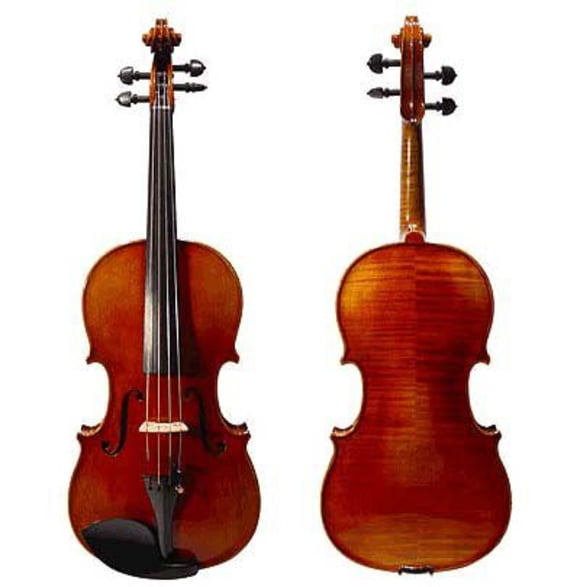2. History & Design
The viola is a member of the string family, a group of four closely related instruments - the violin, the viola, the cello (short for violoncello, hence the apostrophe) and the double bass (often simply referred to as the bass). It is the second highest in pitch, tuned a fifth (five notes) below the violin, and an octave (eight notes) above the cello. To the inexperienced eye, it can be difficult to tell violins and violas apart, so the picture below is included to demonstrate the violas rather more generous proportions!

Violin & Viola Side by Side
Throughout much of its history, the viola has tended to remain rather in the shade of its higher pitched sibling, though that began to change in the 19th Century with major works by composers including Berlioz & Bruch. This trend has continued apace in the 20th and 21st Centuries with large numbers of concertos, including the celebrated compositions of Bartok and Walton.
By comparison with most other instruments in the orchestra, the viola and the rest of the string family are relatively simple, and on the face of it, low tech. However, as any string instrument maker will tell you, in place of the relatively high level of engineering that goes into producing many wind instruments, the construction of violins, violas and cellos requires a more intuitive, organic response to the materials. Learning to make instruments, like learning to play them, is a lifetimes work. Many string players find it fascinating to talk to violin or bow makers about the arcane blend of art and science that goes into creating an instrument. (String instrument manufacturers are usually known as violin makers, though they will invariably make all types of string instruments.)

Modern Viola with a Two-Piece Back
The design of many wind and brass instruments underwent enormous changes during the 19th Century. Typically, makers attempted to increase the range, tonal colour, volume and speed of articulation, often with considerable success. By comparison, changes to the design of stringed instruments were relatively subtle and largely complete by the end of the 18th Century. A viola of 1600 and a viola of today are very much recognizable as the same beast, whereas instruments such as the natural trumpets that Bach was writing for are a world away from their modern, multi-valved equivalents.
Again by comparison with much of the rest of the orchestra, the appearance of stringed instruments seems highly decorative, even fanciful. The eyes are drawn immediately to the extravagant detailing of the scroll, the f-holes and the ogee curve of the corners. Nonetheless, while the viola is undoubtedly a beautiful object, most of the design is essentially practical, and the result of an immensely long, multicultural gestation that spans the globe and traces its way back through a millennium.




